Results
-
£50.80
-
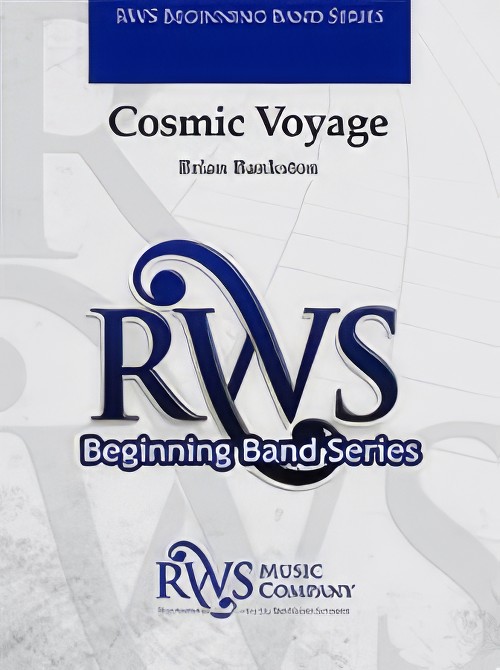 £55.00
£55.00Cosmic Voyage (Concert Band - Score and Parts) - Bankston, Brian
Take your students on a trip through the cosmos with this bold work by Brian Bankston. This space adventure is well within the range of first year players and designed to teach basic articulations and rhythms. Allow your band to discover their next performance level with this interstellar musical adventure. Duration: 2.00
Estimated delivery 7-14 working days
-
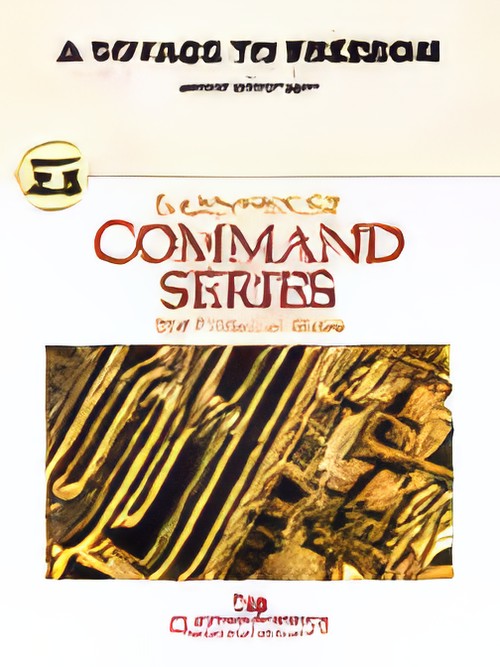 £59.00
£59.00A Voyage to Freedom (Concert Band - Score and Parts) - Swearingen, James
History was made in 1620 when a merchant ship called the Mayflower set sail from Plymouth, England. Typically, the cargo would have consisted of wine and dry goods, but on this trip the ship carried 102 passengers, all of them seeking to start a new life on the far side of the Atlantic. It should be noted that this musical adventure includes all the literary ingredients that make for a fascinating story: freedom, survival, reflection, hope and the remarkable feeling of triumph. Adventure on the high seas! Duration: 3.30
Estimated delivery 7-14 working days
-
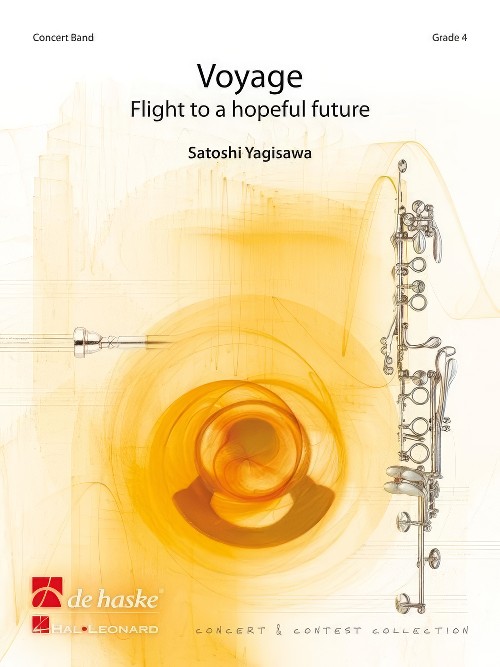 £144.99
£144.99Voyage (Flight into a Hopeful Future) (Concert Band - Score and Parts) - Yagisawa, Satoshi
This opening piece by Japanese composer Satoshi Yagisawa expresses joy, gratitude, hope and courage. The three sections are performed without interruption. We hear 'Joy' in the brilliant introduction, 'Gratitude' in the chorale-like middle section and 'Courage and Hope' in the closing section. A fantastic addition to the Grade 4 repertoire for Concert Band.Duration: 6:45
Estimated delivery 7-14 working days
-
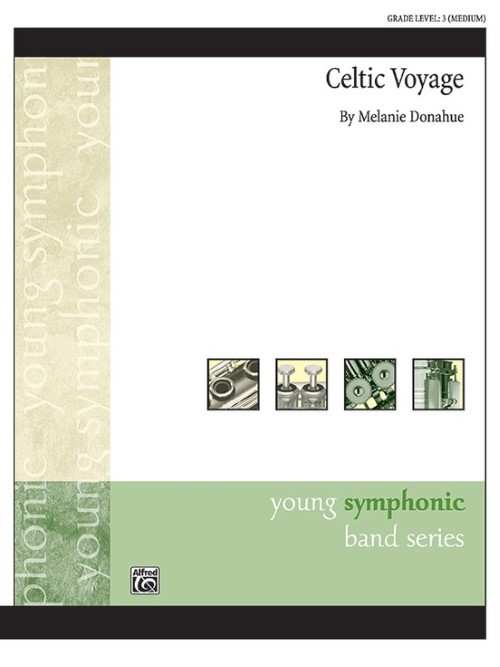 £53.95
£53.95Celtic Voyage (Concert Band - Score and Parts) - Donahue, Melanie J.
Inspired by the many hardships of the Irish immigrants, this piece brings hope of a new world, a new lease on life and a second chance. The piece begins with the sound of the ocean in the background (played by the ocean drum) while a solo flute plays the main theme. As the piece develops the theme represents several scenes: first, the knowledge that life needs to change due to the famine and hardships of the time; second, the immigrants begin their move to America; third, the arrival in America and seeing the statue of Liberty, which is the climactic moment of the piece; and finally, ending with the same idea in the beginning of the piece but now as memory and longing for Ireland.Duration: 3.30
Estimated delivery 7-14 working days
-
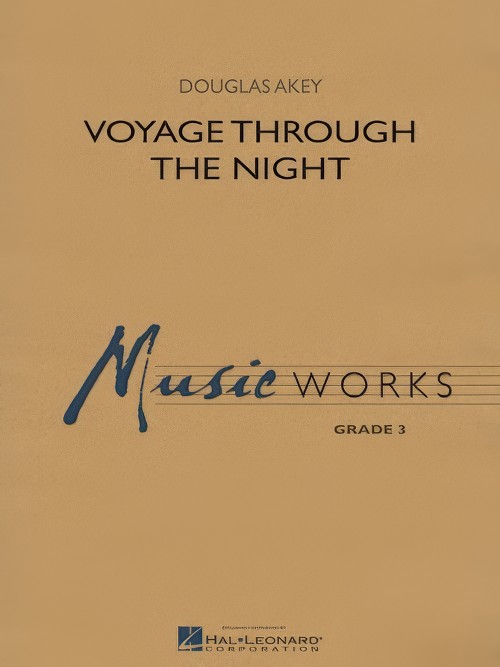 £57.50
£57.50Voyage Through the Night (Concert Band - Score and Parts) - Akey, Douglas
Commissioned by the Indiana Bandmasters Association, this descriptive work is built around two contrasting themes. The first is a haunting slow melody which reoccurs later in a more developed and expanded form. The fast section uses a strong theme with a creative harmonic structure along with occasional mixed meters. With Doug's skillful orchestration and colorful percussion writing this piece is an excellent choice for festivals or contests.
Estimated delivery 7-14 working days
-
 £4.95
£4.95Voyage of the Dragon Armada - By Timothy Loest
This gripping work depicts the epic voyages of China's great naval Admiral Zheng He who commanded 250 ships and 28,000 men a century before Columbus set sail for the New World. Experience a captivating pentatonic melody immersed in vivid orchestration and colorful percussion writing. An exceptional choice for your next concert and a perfect launch pad to multicultural discovery.
Estimated delivery 3-5 days
-
 £244.99
£244.99Journey to the Centre of the Earth - Harrie Janssen
This composition was based on the world-famous novel by the French author Jules Verne. This novel describes the attempt to reach the centre of the earth. The descent of the crater of the volcano called Snaeffels, situated in Iceland, marks thebeginning of this voyage to the sublunary world. The German geologist, professor Lidenbrock, is accompanied on this trip by his nephew Axel and an Icelandic guide named Hans. The last mentioned will be helpful in many occasions. Dark colors & mist The composer tried in this single work to give a musical expression to various significant moments from this novel. In the introduction he sketches an image of the dismal ambience on the island by using dark colors. Risingfragments of mist reveal the flanks of the monumental mountain Scataris. The composer tries to catch this image in a majestic and broad chorale. Away from Iceland Subsequently the ostinato rhythmicity and virtuosity representthe hectic descent of the crater of the volcano. The party descends ever more and more and travels south, away from Iceland. On the way, they see all kinds of rock formations, fossils and minerals. At a depth of thirty hours walking distance, atabout 150 kilometers below the surface, they reach a sub terrestrial sea which is called the Lidenbrock sea. Genuine eruption of sounds Strange electric manifestations and unpredictable weather conditions accompany thissingular phenomenon. An orchestral tutti-episode expresses this impression musically. On a make-shift raft, the party continues its voyage, heading to the south coast of this huge sea. Once ashore, an enormous rock obstructs the passage. The blowingup of this obstacle unleashes a genuine eruption of sounds in the orchestration. Spat out by the volcano But the explosion has an unforeseen side effect. The sea - travelers and raft included - is sucked upwards into a dark hole.Again, our heroes are accompanied on their involuntary voyage, while left to fend for themselves, by an ever increasing ostinato rhythmicity. Before an irruption can destroy the raft, the threesome manages to escape and climb up through acave towards the daylight. They seem to be spat out by the Stromboli volcano on the island of Sicily, far from home. The composition ends with triumphant sounds that represent the scientific triumph of these adventurers.
Estimated delivery 7-14 working days
-
£244.99
Journey to the Centre of the Earth Wind Band Set (Score & Parts)
This composition was based on the world-famous novel by the French author Jules Verne. This novel describes the attempt to reach the centre of the earth. The descent of the crater of the volcano called Snaeffels, situated in Iceland, marks the beginning of this voyage to the sublunary world. The German geologist, professor Lidenbrock, is accompanied on this trip by his nephew Axel and an Icelandic guide named Hans. The last mentioned will be helpful in many occasions. Dark colors & mist The composer tried in this single work to give a musical expression to various significant moments from this novel. In the introduction he sketches an image of the dismal ambience on the island by using dark colors. Rising fragments of mist reveal the flanks of the monumental mountain Scataris. The composer tries to catch this image in a majestic and broad chorale. Away from Iceland Subsequently the ostinato rhythmicity and virtuosity represent the hectic descent of the crater of the volcano. The party descends ever more and more and travels south, away from Iceland. On the way, they see all kinds of rock formations, fossils and minerals. At a depth of thirty hours walking distance, at about 150 kilometers below the surface, they reach a sub terrestrial sea which is called the Lidenbrock sea. Genuine eruption of sounds Strange electric manifestations and unpredictable weather conditions accompany this singular phenomenon. An orchestral tutti-episode expresses this impression musically. On a make-shift raft, the party continues its voyage, heading to the south coast of this huge sea. Once ashore, an enormous rock obstructs the passage. The blowing up of this obstacle unleashes a genuine eruption of sounds in the orchestration. Spat out by the volcano But the explosion has an unforeseen side effect. The sea - travelers and raft included - is sucked upwards into a dark hole. Again, our heroes are accompanied on their involuntary voyage, while left to fend for themselves, by an ever increasing ostinato rhythmicity. Before an irruption can destroy the raft, the threesome manages to escape and climb up through a cave towards the daylight. They seem to be spat out by the Stromboli volcano on the island of Sicily, far from home. The composition ends with triumphant sounds that represent the scientific triumph of these adventurers. 22:00
Estimated delivery 7-14 working days
-
 £149.99
£149.99Columbus - Rob Goorhuis
Christopher Columbus was born in Genoa in 1451. His father was a wool merchant. Originally he seemed destined to follow in his father's footsteps, and thus sailed the oceans to countries as far apart as Iceland and Guinea. In 1476 his ship was sunk during a battle off the coast of Portugal. Columbus saved his own life by swimming to shore. In 1484 he conceived the idea of sailing to the Indies via a westward sea route, but it was only in 1492 that he was able to realize this plan. On this first voyage he was in command of three ships: the flag-ship, called the Santa Maria, the Pinta, and the Ni?a. From Spain Columbus sailed via the Canary Islands to the Bahamas, whichhe sighted on October 12th 1492. Without being aware of it Columbus discovered the 'New World' he thought he had landed in the eastern part of Asia. The motif from Dvok's 9th Symphony 'Aus der neuen Welt' forms a little counterfeit history at this point in the composition. After this first voyage Columbus was to undertake another three long voyages to America. These voyages were certainly not entirely devoid of misfortune. More than once he was faced with shipwreck, mutiny and the destruction of settlements he had founded. After Columbus had left for Spain from Rio Belen in 1503, he beached his ships on the coast of Jamaica. The crew were marooned there and it was only after a year that Columbus succeeded in saving his men and sailing back to Spain with them. In the music the misunderstanding about which continent Columbus discovered in his lifetime resounds, for does this part in the composition not contain Asiatic motifs? Poor Columbus! In 1506 the famous explorer died in Valladolid.
Estimated delivery 7-14 working days
